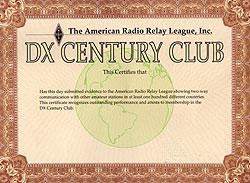 February 21, 2013 John E. Ross, KD8IDJ, Editor
| |||||||||||
+ Available on ARRL Audio News. + FCC Enforcement News: FCC Denies California Man's Petition for Reconsideration and Upholds $24,000 Fine for Unlicensed Radio Operations, Refusing Inspection of Radio Equipment In June 2011, the FCC issued a Forfeiture Order in the amount of $24,000 to Kevin W. Bondy of Encino, California for engaging in unlicensed radio operation and intentional interference to licensed radio operations and for refusing to allow an inspection of his radio equipment by FCC personnel. Following a Petition for Reconsideration filed by Bondy, the FCC issued a Memorandum Report & Order on February 15, upholding the $24,000 fine.
In assessing the $24,000 fine, the FCC noted that it was responsible for making and enforcing regulations to prevent interference and to maintain control over the use of the radio spectrum in a manner that promotes the public interest and convenience. "Bondy's acts cut at the heart of the Commission's responsibilities to protect the nation's airwaves and regulate use of the spectrum," the 2011 Forfeiture Order said. "Bondy operated a radio without a license on the specific frequencies assigned and licensed by the Commission to The Oaks Shopping Center for the explicit and expressed purpose of prohibiting The Oaks's use of its licensed frequencies. This type of conduct inhibits the Commission's ability to effectively regulate and maintain control over the use of the spectrum and will not be tolerated." Read more here. + Public Service: Hams Across New England and the Maritimes Respond to Blizzard
As a blizzard swept across New England February 9-10, SKYWARN was ready. The storm dumped heavy snowfall -- with some areas receiving upwards of 3 feet of snow -- as blizzard conditions brought hurricane force winds that created power outages and significant tree and power line damage over Southeastern Massachusetts and Rhode Island. ARRL Eastern Massachusetts Section Emergency Coordinator Rob Macedo, KD1CY, helped lead operations at WX1BOX, the Amateur Radio station at the National Weather Service office in Taunton, Massachusetts, where hams were active for 28 continuous hours. Macedo also serves as the ARES SKYWARN Coordinator for the NWS office in Taunton. The blizzard did not just affect the New England area -- Canada caught the brunt of the storm, as well. According to CANWARN's Jim Langille, VE1JBL, CANWARN members received messages from Bob Robichaud, VE1MBR, at the Atlantic Storm Prediction Centre in Dartmouth, Nova Scotia to let them know of the storm and that there was the possibility of an activation. CANWARN is the Canadian equivalent to SKYWARN. Read more here. + Public Service: American Red Cross to Phase Out Emergency Communication Response Vehicles The American Red Cross has made the decision to phase out and decommission its Emergency Communication Response Vehicles (ECRVs) due to changes in technology, as well as a new satellite system and other factors regarding the vehicle fleet. "Retrofitting the decade-old vehicles with new equipment is not a good use of donated funds, as the long-term strategy is to move to more portable systems," American Red Cross Disaster Services Technology Manager Keith Robertory, KG4UIR, told the ARRL. "This is consistent with the trends in the telecom and technology industries."
The American Red Cross will be removing the Amateur Radios from the ECRVs as part of the decommissioning process. These radios will either become part of the deployable inventory or provided to the local American Red Cross chapter to build local capacity. Robertory explained that from a radio perspective, the American Red Cross has a variety of different kits for amateur, business and public safety bands covering HF, VHF and UHF with portable radios, mobile units and base stations: "Two-way radio remains a valuable tool, providing communications in the initial days or weeks of a disaster, until normal communications is restored. Each American Red Cross chapter should continue with -- and improve -- the relationship with their local Amateur Radio operators. In a disaster, Amateur Radio will be the fastest deployed radio network because operators already live in the impacted communities." Read more here. + Amateur-created "Varicode" Adopted as ITU Recommendation On Tuesday, February 19, François Rancy -- Director of the Radiocommunication Bureau of the International Telecommunication Union -- announced the simultaneous adoption and approval by correspondence of a new Recommendation entitled Telegraphic Alphabet for Data Communication by Phase Shift Keying at 31 Baud in the Amateur and Amateur-Satellite Services.
The alphabet -- commonly called "Varicode" because the more frequently used characters (in the English language) occupy fewer bits -- was developed by Peter Martinez, G3PLX, in the 1990s. Martinez was awarded the ARRL Technical Innovation Award for the year 2000 by the ARRL Board of Directors for his development of PSK31, which uses Varicode for transmission efficiency in much the same way as the Morse code. In ITU parlance, it now becomes Recommendation ITU-R M.2034. Adoption of the Recommendation is the culmination of work conducted in ITU-R Study Group 5 and its Working Party 5A during 2011 and 2012. Working Party 5A is responsible for studies of techniques and frequency usage in the Amateur and Amateur-Satellite Services, as well as certain aspects of the land mobile and fixed services. Read more here. Australian Amateurs May Lose 2300-2302 MHz The Australian Communications and Media Authority (ACMA) -- that country's equivalent to the FCC -- has proposed changes to spectrum usage in the 2300-2302 MHz band that will make it off-limits to Australian amateurs as of 2015. The ACMA wants to re-allocate the spectrum to LTE (Long-Term Evolution) wireless data systems, the kind popularly used for mobile broadband applications. The proposed change would give LTE services 100 MHz between 2300 and 2400 MHz.
According to the Wireless Institute of Australia (WIA), this secondary Amateur Radio allocation is the only viable option for Earth-Moon-Earth (EME) contacts between Australia and IARU Region 2 (where the EME activity is on 2304 MHz) or Region 1 (which uses 2320 MHz). If the reallocation goes through, Australian EME activity would then be confined to 2400 MHz and above, where ISM and Wi-Fi equipment are likely to cause interference. "Amateurs in the United States are in no immediate danger of losing 2300-2305 MHz because the use of the 2300-2400 MHz band by various radio services in this country is quite different from most of the world," explained ARRL Chief Executive Officer David Sumner, K1ZZ. "Unfortunately, our colleagues in many other countries are facing the same challenge as in Australia, as the pressure grows for commercial mobile broadband services." -- Thanks to Phil Wait, VK2ASD, and the Wireless Institute of Australia for the information + Check Out the March Issue of QST The March issue of QST -- our annual antenna issue -- celebrates that integral part of any radio amateur's station. So grab your print edition of QST -- or settle in with your computer or tablet to read the digital version -- and discover what the March issue has to offer.
Usually it's possible to cover the full width of an amateur band with a single dipole. But when it comes to 75 meters (SSB) and 80 meters (CW), it gets a bit trickier. In his article "A Wideband Dipole for 75 and 80 Meters," Ted Armstrong, WA6RNC, takes a look at how you can cover 3.5-4 MHz with just one antenna. On the other end of the spectrum, both 10 and 6 meters see a lot of activity. Larry King, N5AFY, explains a way to combine these two hot bands on one antenna in his article "The Technician 6 and 10 Meter Special." And the reason the higher bands are so hot right now? It's all due to the Sun and Solar Cycle 24. In his article "The Sun and the Ionosphere," former NCJ Editor Carl Luetzelschwab, K9LA, explains how that relationship establishes the limits of HF propagation. While many amateurs envy big antennas, there is something to be said for good things that come in smaller packages. Stan Levandowski, WB2LQF, knows that this is true, especially when it comes to the size of his shack. In his article "The 11 Square Foot Ham Shack," he shows how you can have a comfortable, efficient station in a small footprint. And just as all ham shacks are not created equal, neither is all audio. NCJ Managing Editor Rick Lindquist, WW1ME, explains how "amping it up" may hurt more than it helps in his article "Your On-the-Air Sound." QST Product Review Editor Mark Wilson, K1RO, takes a look at the Tokyo Hy-Power Labs HL-550FX linear amplifier in this month's Product Review. He says this amplifier "covers 160-6 meters in a compact package." QST Technical Editor Joel R. Hallas, W1ZR, checked out the MFJ-976 and Palstar BT-1500A high power balanced antenna tuners, noting that both antenna tuners can match most balanced antenna systems on most bands. You can find video overviews of the Tokyo Hy-Power Labs HL-550FX linear amplifier, the MFJ-976 high power balanced antenna tuner and the Palstar BT-1500A high power balanced antenna tuner in the digital edition of the March issue of QST. Of course, there are the usual columns you know and have come to expect in the March issue of QST: Happenings, Hints & Kinks, The Doctor is In, Short Takes, Technical Correspondence, Vintage Radio, How's DX? and more. Look for your March issue in your mailbox and in your inbox. QST is the official journal of the ARRL, the national association for Amateur Radio. QST is just one of the many benefits of ARRL membership. To join, or to renew your ARRL membership, please see the ARRL web page. ARRL Spring Section Manager Election Results
Montana, Arizona and Iowa will be getting new Section Managers beginning April 1. In the only contested race this election cycle, George Forsyth, AA7GS, of Great Falls, beat out incumbent ARRL Montana Section Manager Doug Dunn, K7YD, of Livingston. Forsyth received 199 votes, while Dunn received 175 votes; Dunn has served 10 years as Section Manager. Forsyth -- an ARRL Life Member and ARRL Volunteer Examiner -- has been licensed for more than 28 years. He has served as the president and a board member of the Great Falls Area Amateur Radio Club and as a director of the Glacier Waterton International Hamfest. Ballots were counted at ARRL Headquarters on Tuesday, February 19. Only one candidate was nominated for Section Manager in the Arizona and Iowa Sections. Robert Spencer, KE8DM, of Yuma, will take over from ARRL Arizona Section Manager Tom Fagan, K7DF, of Tucson, who has been in office since 2005. Fagan decided not to run for another term of office. Robert McCaffrey, K0CY, of Boone, will succeed ARRL Iowa Section Manager Tom Brehmer, N0LOH, of Muscatine, who also decided not to run for another term of office. Brehmer has been Section Manager since 2009. The following incumbent ARRL Section Managers did not face opposition and were declared elected for their next two-year terms of office beginning April 1: Dale Temple, W5RXU, Arkansas; Jim Brooks, KY4Z, Kentucky; Malcolm Keown, W5XX, Mississippi; Walt Mayfield, KE5SOO, North Texas; Carl Gardenias, WU6D, Orange, and Garth Crowe, N7XKT, Wyoming. Solar Update
Tad Cook, K7RA, reports: There was a modest rise in the average daily sunspot numbers over the past seven days, rising 27 points to 78.3, while the average daily solar flux was up marginally, only 1.6 points to 105.6. The geomagnetic indices also went up, with the planetary A index rising from 5.6 to 6.4, and the middle latitude A index rising from 5.1 to 6. But there was a more substantial rise in both the solar flux and sunspot numbers for the past three days, with the solar flux at 104.7, 112.4 and 113.5, and the sunspot numbers at 92, 117 and 106. The predicted solar flux is 115 on February 21-22, 110 and 105 on February 23-24, 100 on February 25-March 3, 95 on March 4-14, 100 on March 15-16, 115 on March 17, and rising to 120 on March 18-20, which represents a peak for the next 45 days. The predicted planetary A index is 8 on February 21-22, 10 on February 23-24, 8 on February 25, 5 on February 26-28, 10 and 8 on March 1-2, 5 on March 3-10, 7 on March 11-12, and back down to 5 on March 13-27. Over the next month, we can look forward to improving HF conditions as we progress toward the spring equinox, which occurs on Wednesday, March 20 at 1102 UTC. Look for more on the ARRL website on Friday, February 22. For more information concerning radio propagation, visit the ARRL Technical Information Service Propagation page. + International Space Station Experiences Loss of Communications with Ground Control
At approximately 9:45 AM EST (1445 UTC) on Tuesday, February 19, the International Space Station (ISS) experienced a loss of communication with the ground. At that time, flight controllers in Houston were updating the software onboard the ISS's flight computers when one of the ISS's data relay systems malfunctioned. The primary computer that controls critical station functions defaulted to a backup computer, but it did not allow the ISS to communicate with NASA's tracking and data relay satellites. Mission Control at Johnson Space Center in Houston, Texas was able to communicate with the crew as the ISS flew over Russian ground stations before 11 AM EST (1500 UTC) and instructed the crew to connect a backup computer to begin the process of restoring communications. Once communication was re-established, Expedition 34 Commander Kevin Ford, KF5GPP, reported that the ISS's status was fine and that the crew was doing well. Communication systems were restored as of 12:34 PM EST. -- Thanks to NASA for the information On the Air: Three Operations Approved for DXCC Credit
ARRL DXCC Manager Bill Moore, NC1L, reports that three current operations have been approved for DXCC credit: 5X8C in Uganda (commencing in 2012) and the T6TJ (commencing in 2012) and T6BP (commencing in 2011) operations in Afghanistan. "If you have had cards for these operations rejected in a recent application, please send an e-mail to the ARRL DXCC Desk and you will be placed on the list for an update," Moore said. "If your QSOs were only via Logbook of The World (LoTW), they were not imported to DXCC, since the operations were not approved at the time of your submission. LoTW QSOs can be reclaimed via your next LoTW submission. Once updated, results will appear in LoTW accounts, as well as online in the daily listings. This Week in Radiosport This week:
Next week:
All dates, unless otherwise stated, are UTC. See the ARRL Contest Branch page, the ARRL Contest Update and the WA7BNM Contest Calendar for more information. Looking for a Special Event station? Be sure to check out the ARRL Special Event Stations web page. Upcoming ARRL Section, State and Division Conventions and Events
To find a convention or hamfest near you, click here. ARRL -- Your One-Stop Resource for Amateur Radio News and Information Join or Renew Today! ARRL membership includes QST, Amateur Radio's most popular and informative journal, delivered to your mailbox each month. Subscribe to NCJ - the National Contest Journal. Published bi-monthly, features articles by top contesters, letters, hints, statistics, scores, NA Sprint and QSO Parties. Subscribe to QEX -- A Forum for Communications Experimenters. Published bi-monthly, features technical articles, construction projects, columns and other items of interest to radio amateurs and communications professionals. Free of charge to ARRL members: Subscribe to the ARES E-Letter (monthly public service and emergency communications news), the ARRL Contest Update (bi-weekly contest newsletter), Division and Section news alerts -- and much more! Find us on Facebook. Follow us on Twitter. ARRL offers a wide array of products to enhance your enjoyment of Amateur Radio. Donate to the fund of your choice -- support programs not funded by member dues! Click here to advertise in this newsletter (subject to space availability). | |||||||||||

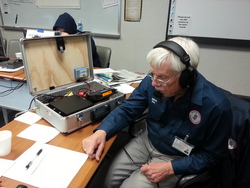
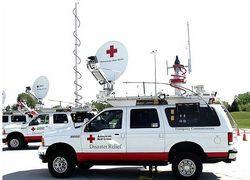
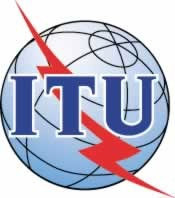


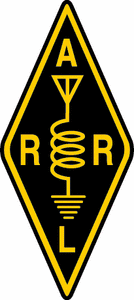
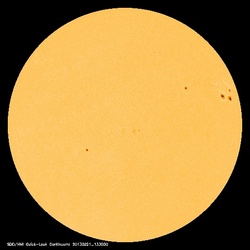
.jpg)
